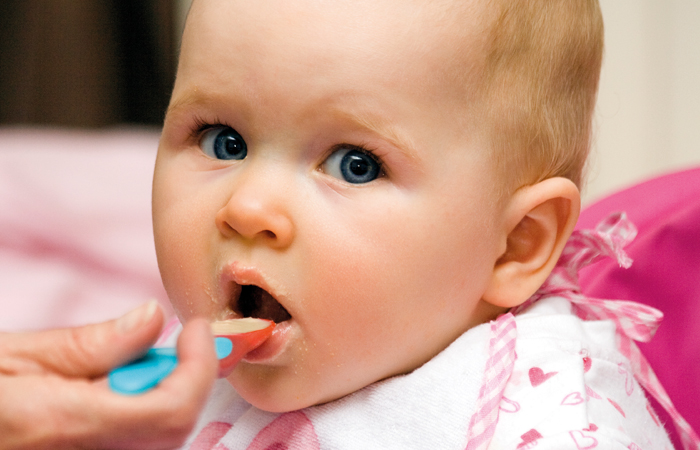2. Practical advice
In Weaning
Follow this topic
Bookmark
Record learning outcomes
Moving on from milk to adding solid food to a baby's diet can be daunting for both the baby and the parents. But some simple tips can make the process run as smoothly as possible

Do’s and don’ts
Most ingredients are safe for babies, but advise parents:
- Not to add salt to food as it is bad for babies’ kidneys. Avoid stock cubes and gravy too as these are often high in salt
- Not to add sugar to babies’ food. However, natural sugars from mashed fruit or breast/ formula milk are fine
- To avoid honey until the age of 12 months. Occasionally, honey contains bacteria that can produce toxins in a baby’s intestines, leading to infant botulism, which is a very serious illness. As honey is also a sugar, avoiding it helps prevent tooth decay
- To avoid wheat, gluten, nuts (including peanuts), soya, meat, fish, dairy and other potential allergens until six months of age as they may cause allergies or make the baby ill
- Not to give whole peanuts or nuts to children under five years old because they could choke on them
- Not to choose low fat foods.
- Fat is an important source of calories and certain vitamins for babies and young children. It’s better for infants between the ages of six months and two years to have full-fat milk, yoghurt and cheese
- Not to give shark, swordfish or marlin. The amount of mercury in these fish can affect a baby’s growing nervous system
- Always check the labels of cooking sauces, soups, breakfast cereals, etc., as they may contain high levels of salt, sugar or artificial sweeteners.
Not to add salt to food as it is bad for babies’ kidneys. Avoid stock cubes and gravy too as these are often high in salt
 Top tips for starting weaning
Top tips for starting weaning
Parents can try the following:
- Choose a time of day when they are relaxed and baby is alert
- Try giving the baby food during or after a milk feed so that the baby is not hungry and doesn’t get frustrated when expecting the breast or a bottle
- To begin with, offer a couple of teaspoonfuls of food once
a day. Try starting with puréed vegetables, then progress to fruit or cereal mixed with milk - Allow plenty of time, and prepare to get messy
- Wait for the baby to open their mouth before spoon-feeding. If the baby doesn’t seem to like a particular food, don’t force it – just try again another day
- Gradually increase the amount of food and offer food twice and then three times a day. The aim will eventually be to get babies eating three meals a day – breakfast, lunch and dinner – with healthy snacks in between
- Once the baby has learned to eat puréed foods, start giving food with soft lumps. Even babies without any teeth can learn
to chew soft food - Let the baby learn and get used to individual tastes before mixing foods, particularly fruit and vegetables
- Remember to keep introducing the baby to a wide range of healthy tastes and textures by trying new foods – this way they are more likely to keep eating them as they grow up. It can take 10 or more attempts before a baby accepts a new food, so keep trying
- Be positive and praise the baby for trying new foods.
